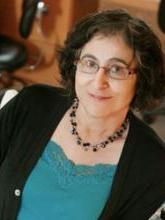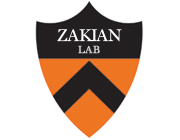
Virginia Zakian

Virginia Zakian
Virginia A. Zakian is the Harry C. Weiss Professor in the Life Sciences in the Department of Molecular Biology at Princeton University. She received her B.S. in Biology from Cornell University and her Ph.D. in Biology in 1975 for research carried out in the lab of Dr. Joseph G. Gall at Yale University. In 1979, after three years of post doctoral work (first at Princeton University with Dr. Arnold J. Levine in Biochemistry and then the University of Washington with Dr.Walton F. Fangman in Genetics), she started her own lab at the Fred Hutchinson Cancer Research Center in Seattle WA. She became a tenured full professor in 1987. In 1995, she joined the faculty of the Department of Molecular Biology at Princeton University where she is currently the Harry C. Wiess Professor in the Life Sciences where her research concerns chromosome structure and replication, with a focus on telomeres, the ends of chromosomes and replication fork progression through natural replication barriers. Throughout her career, she has been an advocate for women in science.
Research in the Zakian lab uses diverse genetic, biochemical, and cell biological approaches to understand chromosome behaviour. Most of their experiments are done with either budding or fission yeasts, although other model organisms, e.g., ciliated protozoa and mammalian cultured cells, are also used.
Virginia A. Zakian has made critical contributions in two areas of chromosome biology: telomeres and replication fork progression. Her work is characterized by a willingness to tackle important questions, use of a wide variety of experimental approaches, and novel findings. Her lab used ciliates to isolate the first telomere single-‐strand DNA binding proteins, the prototype of Pot1, and demonstrated that they protect DNA ends from degradation. Her lab discovered telomeric silencing and cell cycle dependent degradation of C-‐strand telomeric DNA in budding yeast, features now known to occur in diverse eukaryotes. They also identified proteins and events required for cell cycle and length-‐dependent regulation of telomerase.
Her work on fork progression focuses on the Pif1 family of DNA helicases, which her lab showed are conserved from bacteria to humans. These studies began with the discovery that the budding yeast Pif1 acts catalytically to eject telomerase from telomeres and double strand breaks, thereby inhibiting telomerase action. Two other members of the Pif1 helicase family, budding yeast Rrm3 and fission yeast Pfh1, promote semi-‐conservative replication through telomeric DNA. Moreover, budding and fission yeast Pif1 family helicases have more general roles in combatting the replication stress that arises at naturally occurring replication barriers, such as stable protein complexes, converged replication forks, and DNA secondary structures; e.g., the Zakian lab used a combination of biochemistry and genetics to demonstrate an evolutionarily conserved role for Pif1 family helicases in promoting replication and suppressing DNA damage at G-‐quadruplex DNA. Her lab also discovered that highly transcribed RNA polymerase II genes are the most potent obstacles for DNA replication in wild type yeast cells, a conclusion later found to apply to diverse organisms.

